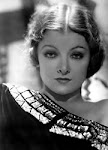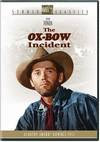Rain
Imitation of Life
The Boys in the Band
If you have read my previous postings, you already know that I was a black child who grew up in a white neighborhood. You will also know that I allowed homophobia to cloud some of my youthful decisions. So I guess you could say that I am no stranger to what society refers to as an “identity crisis.”
However, before I begin the discussion of the above movies, I would like to point out that I have always been comfortable in my skin. I never doubted my racial identity; my parents – and, unbeknownst to them, my neighborhood friends – made sure of that. Also, I never doubted my heterosexuality; I’ve found untold joy in kissing females other than family members since I was six years old. Additionally, I’ve always found it easy to make friends and never particularly cared about their race or sexual orientation. But I have to admit that at times as a child and as a young adult, I feared that people might mistake me for a homosexual – apparently an easy thing to do because I am an educated black man who can speak English without any trace of ghettoese.
As I grew older, however, I learned to stop worrying about other people’s misconceptions. In fact, I began to enjoy them. It amused me that I could see the apprehension and fear in the eyes of whites, especially women, when we passed on the street. And once, I was coaching my son’s soccer team when a drunken black man asked me, through a chain-link fence, if I was “you know, funny,” I asked him if he would feel threatened by it if I were. He replied simply, Yes.” I replied, “Good” and then turned and walked away. My son, who was with me during this exchange, said as we returned to the team, “That guy was stupid, Daddy.” I had to agree.
An identity crisis also can make people ask themselves – and others – stupid questions. And if those questions are not answered satisfactorily, they could lead a person to do stupid, self-destructive things – as I will demonstrate with the help of the movies Rain (released in 1932 in black and white), Imitation of Life (1934, b&w) and The Boys in the Band (1970, color).
Rain is the first talking version of the story of Sadie Thompson. The story’s first cinematic production was made toward the end of the silent era in 1928 and was titled Sadie Thompson. A color version, titled Miss Sadie Thompson, was made in 1954. But my favorite is the 1932 version. It is a story in which we see two people dealing with issues of identity.
The story begins when a ship arrives at a South Seas island. Among those embarking are Sadie Thompson, a woman with the reputation of being a loose and unsavory, and a supposedly pious missionary named Alfred Davidson and his wife. Davidson makes it his mission to turn Sadie into an honorable woman and spends most of the movie haranguing her about her evil ways. Sadie, naturally, resists the attempts to save her soul. Davidson eventually threatens to have the governor of the island send Sadie to San Francisco, where she is apparently wanted by the police. Sadie has other plans – Australia. While the two argue about her fate, she has an epiphany, of sorts, and decides that she should change her ways and return to San Francisco to face the music, after which she can become a virtuous woman.
Ah, but Davidson proves not to be the man he thinks he is. After the conversion of Sadie, he rapes her. Then, unable to face his own duplicity, he commits suicide. And Sadie? She reverts to her old self and accepts the invitation of a man named O’Hara, who has been wooing her throughout the movie, to go with him to Australia.
Imitation of Life was remade in 1959 in color. Again, if I have a choice between a black and white movie or a remake of that movie in color, I’ll usually chose the black and white version. But there is another reason I prefer the older telling of this tale; it includes a rare display of racial equality that the color version lacks. The story is about two women – one white, named Beatrice Pullman; one black, named Delilah Johnson; both heterosexual – who decide to live together and raise their children, two girls (Jessie and Peola, respectively), together. Now when I say “raise their children together” you should understand that Delilah is considered by the primary caregiver by both children. But in the original version, the two women become business partners who make their money by marketing Delilah’s pancake recipe. In the color version, the black woman appears to be more of a servant that a partner.
Neither of these women have a husband. Beatrice is a widow and I don’t remember any mention of Delilah’s. However, I assume the father of Delilah’s child is white because her daughter Peola’s fair skin suggests as much. And Peola’s fair skin creates the girl’s identity crisis.
The first sign of Peola’s crisis arises when Delilah shows up at her daughter’s class. When the teacher asks her why she’s there, Delilah tells the teacher that she is bringing her daughter her lunch. After the teacher tells Delilah that she doesn’t have any colored children in her class, Delilah points out “her baby” – which surprises both the teacher and the students and embarrasses Peola. When they return home, Delilah tries to console her daughter and tell her that she shouldn’t try to pass for white. But Peola refuses to listen and refuses to return to that school.
When Peola is old enough to leave home, she also leaves town to start a new life as a waitress in a whites-only restaurant in Virginia. Delilah eventually tracks her down and confronts Peola at the eatery. Peola denies any relationship to Delilah in front of her boss and customers, but they do go home together after the incident. Once home, Peola announces that she plans to leave again and tells Delilah that she doesn’t ever want to see her again. Delilah, heartsick by her daughter’s rejection of her and her race, becomes gravely ill, losing her will to survive. On her deathbed, Delilah asks Beatrice to take care of Peola, should she ever return.
Well, Peola does return, just in time for Delilah’s funeral. She throws herself on her mother’s casket, sobbing uncontrollably and filled with regret for that way she treated her mother.
The Boys in the Band is about a birthday party attended by a group of gay men. Before the party begins, Michael, one of the party planners, receives a phone call from Alan, a heterosexual college classmate who wants to pay Michael a visit and agrees to come to the party.
During the visit, Alan is visibly uneasy about being surrounded by the group of gay men. But then again – to my eye, anyway – they all seemed somewhat uneasy with each other, with one possible exception. Don’t get me wrong: These admittedly gay men appear to have genuine affection for each other. However, they also relentlessly hurl insults at each other. This affection tinged with contempt tells me that there is a lot of self-loathing at that party. And the presence of Alan, who we are told had rejected Michael’s advances during their college days, left me believing that he, too, was wondering about his own sexual identity. Michael’s accusation that Alan was hiding his own homosexual desires confirmed my suspicions.
The boys play a party game that involves calling the person they loved the most and telling that person how they feel. A couple of the callers make feeble attempts to fulfill the game’s requirements, but one caller – Hank, who came to the party with Larry, his apparent lover – calls Larry’s answering service to leave a message that he (Hank) does love him (Larry). This call showed me that Hank was probably the only one of them who was comfortable with his sexuality. And although Alan called his former wife to tell her how much he loved her, which seemed to upset Michael, it didn’t convince me that he was completely sure of his sexuality.
The questions “Who and I” and “What am I” created havoc and pain in all three movies. In Rain, Davidson’s sudden realization of who he really was resulted in his suicide and absolved Sadie of the guilt that led to her epiphany. After all, if even pious missionaries were lecherous pigs, how was if fair that she should be chastised for being the party girl who she enjoyed being. In Imitation of Life, it took the death of Delilah to make Peola realize that despite her fair features, she was her mother’s child and she was wrong to try to deny that. As for The Boys in the Band, the only violence was the verbal abuse and hurt feelings that they heaped upon each other.
Ironically, Rain – the oldest of the three movies – is the one that would be most believable in today’s setting. Because of societal advances – including the election of a black man as president of the United States and the widespread acceptance of interracial and gay relationships, marriage and civil unions – fewer light-skinned blacks feel the need, or desire, to pass as whites; and fewer gays feel conflicted about their sexual identities. And that’s a good thing.
But remember that even though the times they are a changing, it always helps to take a look back and remember that things weren’t always as they are now.
Thursday, February 26, 2009
Subscribe to:
Post Comments (Atom)






























































No comments:
Post a Comment